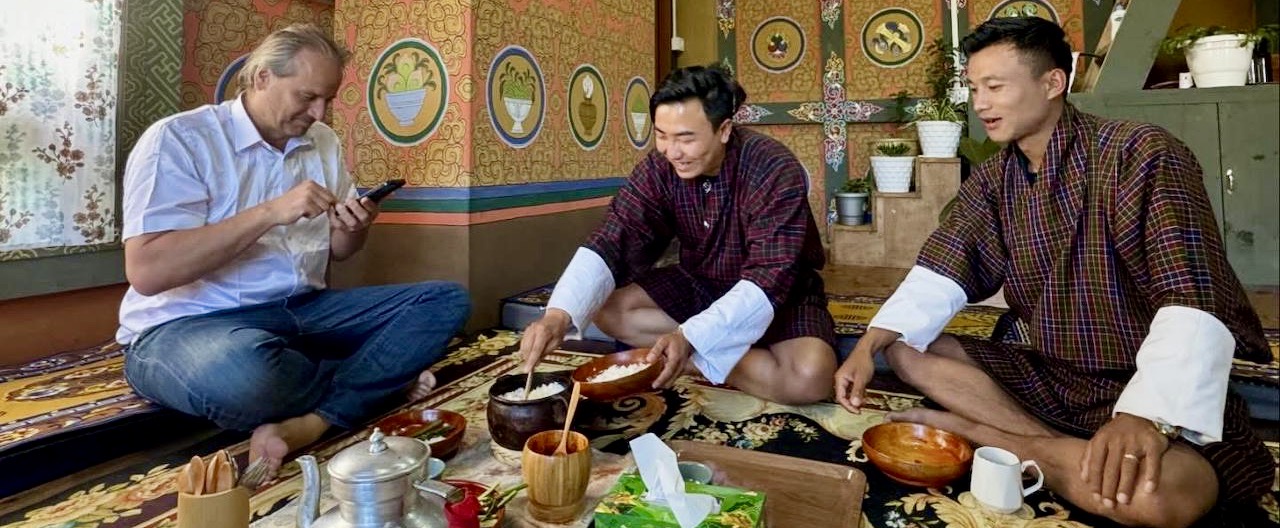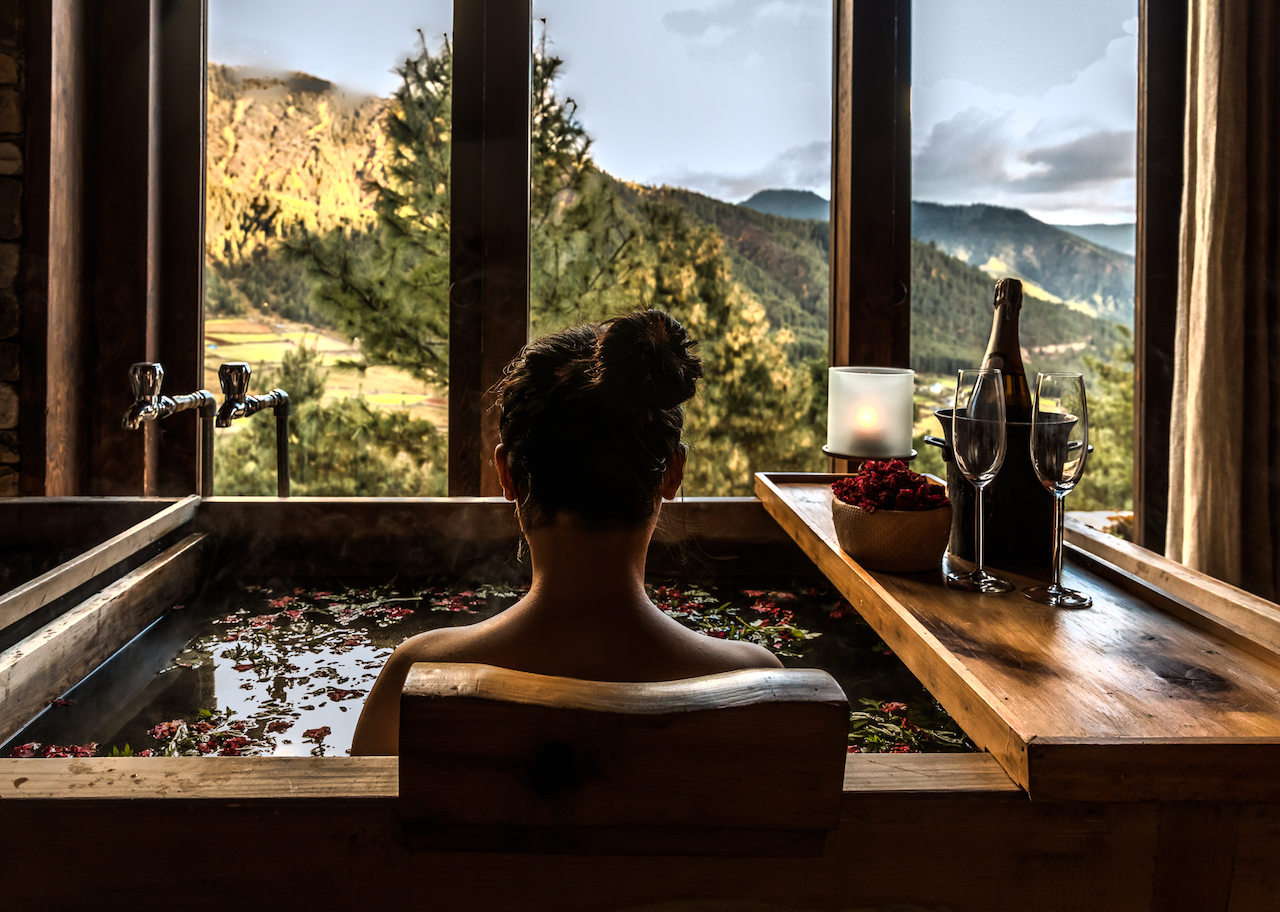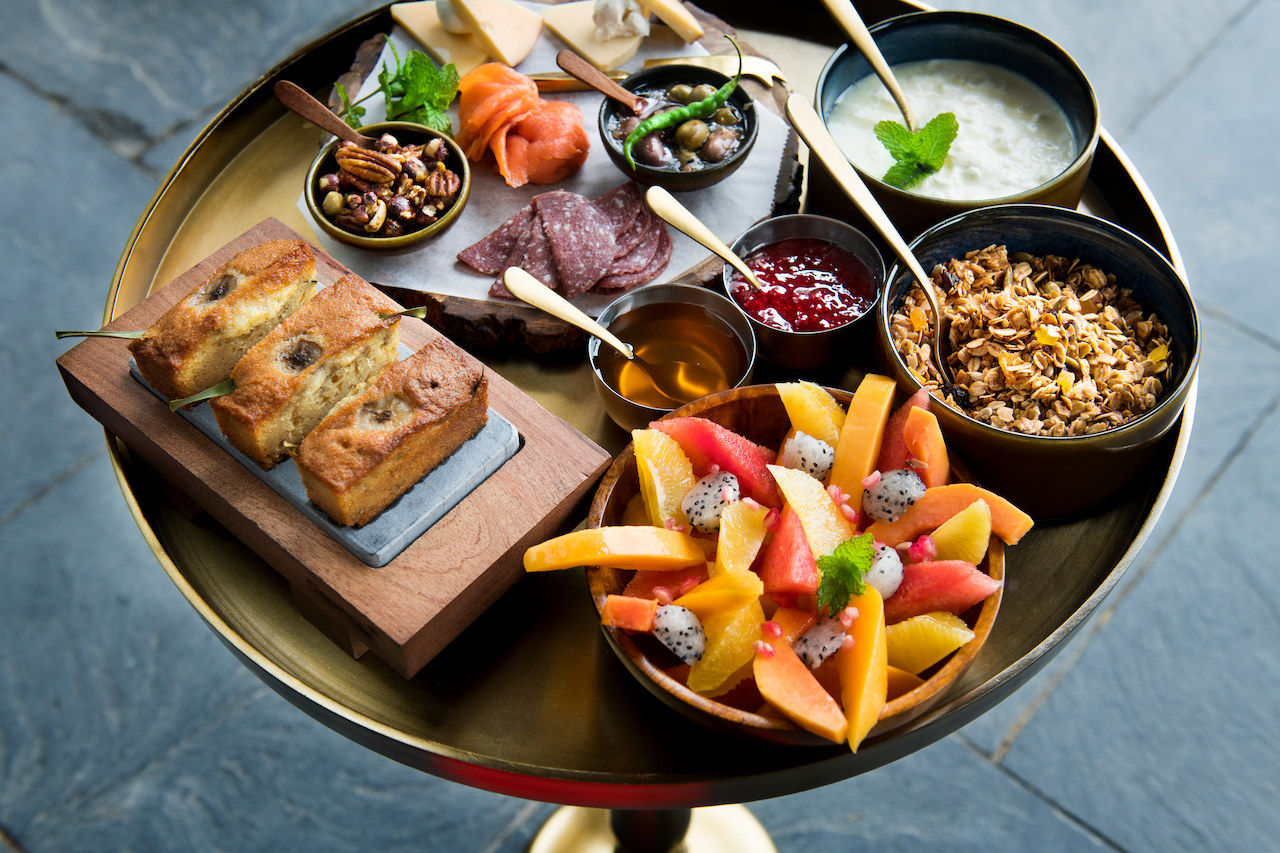You can contact us by e-mail or phone
from uk
01405 862917
outside uk
+44 1405 862917
01405 862917
+44 1405 862917
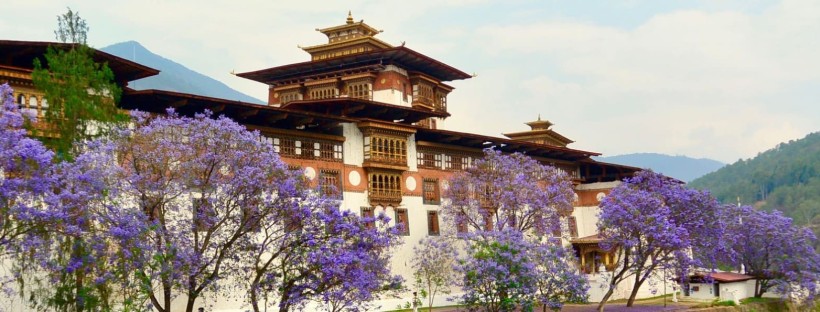
BHUTAN EXPLORING THE REAL MAGIC KINGDOM
Snow Cat Travel - A UK registered trade mark
Which is better, a dream or reality? A lot of people might say a dream is always better than reality. A visit to the amazing country of Bhutan might just change their minds.
Bhutan is truly magical and very, very special. It is probably the most culturally intact country in the world, a country where “Gross National Happiness” is more important than “Gross National Product”.
Not only that, Bhutan aims not to be carbon neutral, but carbon positive. Even in the Bhutan Constitution a massive 60% of the entire country is to be maintained as forest for all time.
And to top it all off, the people of Bhutan are enchanting. Hospitable and friendly. Proud to show visitors their country and welcome them.
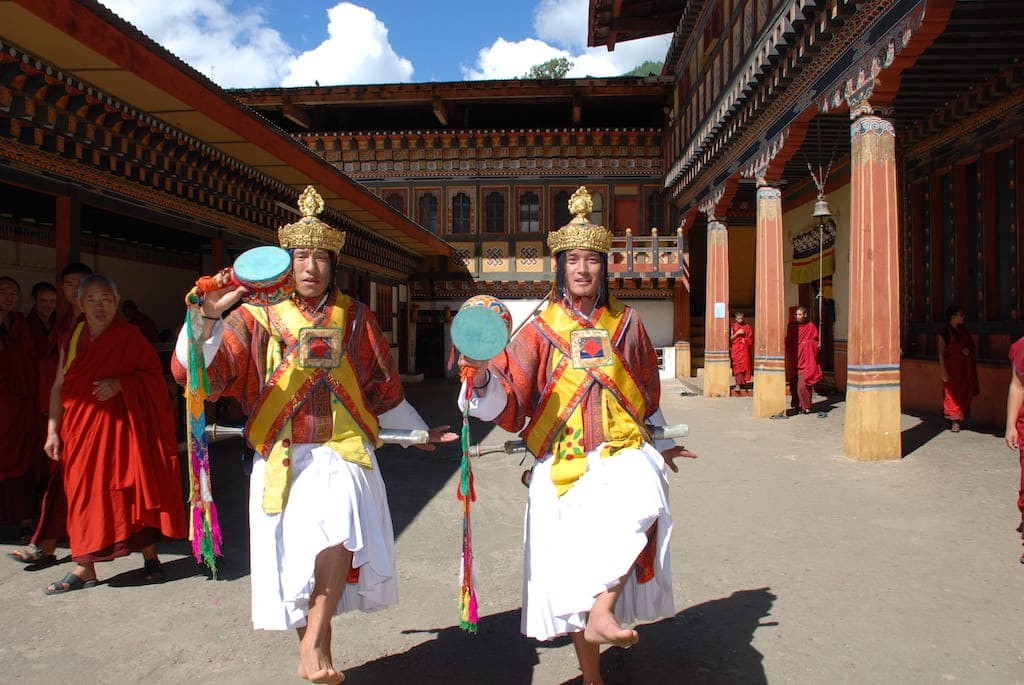
The landscape of Bhutan is stunning. Just stunning. From the high, snowy peaks of the Himalayas, to lush wooded mountain sides, verdant valleys and rural bliss.
Within the magnificent landscape is a wealth of culture, heritage and proud traditions that remain steadfast. Indeed the Bhutanese intend to maintain their traditions, whether it be the many colourful festivals or their commitment to “Zorig Chusum”. What’s Zorig Chusum? It’s the historic 13 arts and crafts of Bhutan, for which there’s even a National Institute to ensure the skills of artists and craftsmanship are maintained. Zo=the ability to make, Rig = Craft, Chusum = 13.
A journey through Bhutan isn’t just amazing landscapes and a rich, cultural heritage and identity…..it’s like a lesson in life we all should learn. Look after each other and look after our environment and with almost 80% of all Bhutanese people being engaged in agriculture the environment and management of it is crucial.
And, then there’s the name of Bhutan in the local language….”DRUK YUL”…Land of the Thunder Dragon. Says it all really.
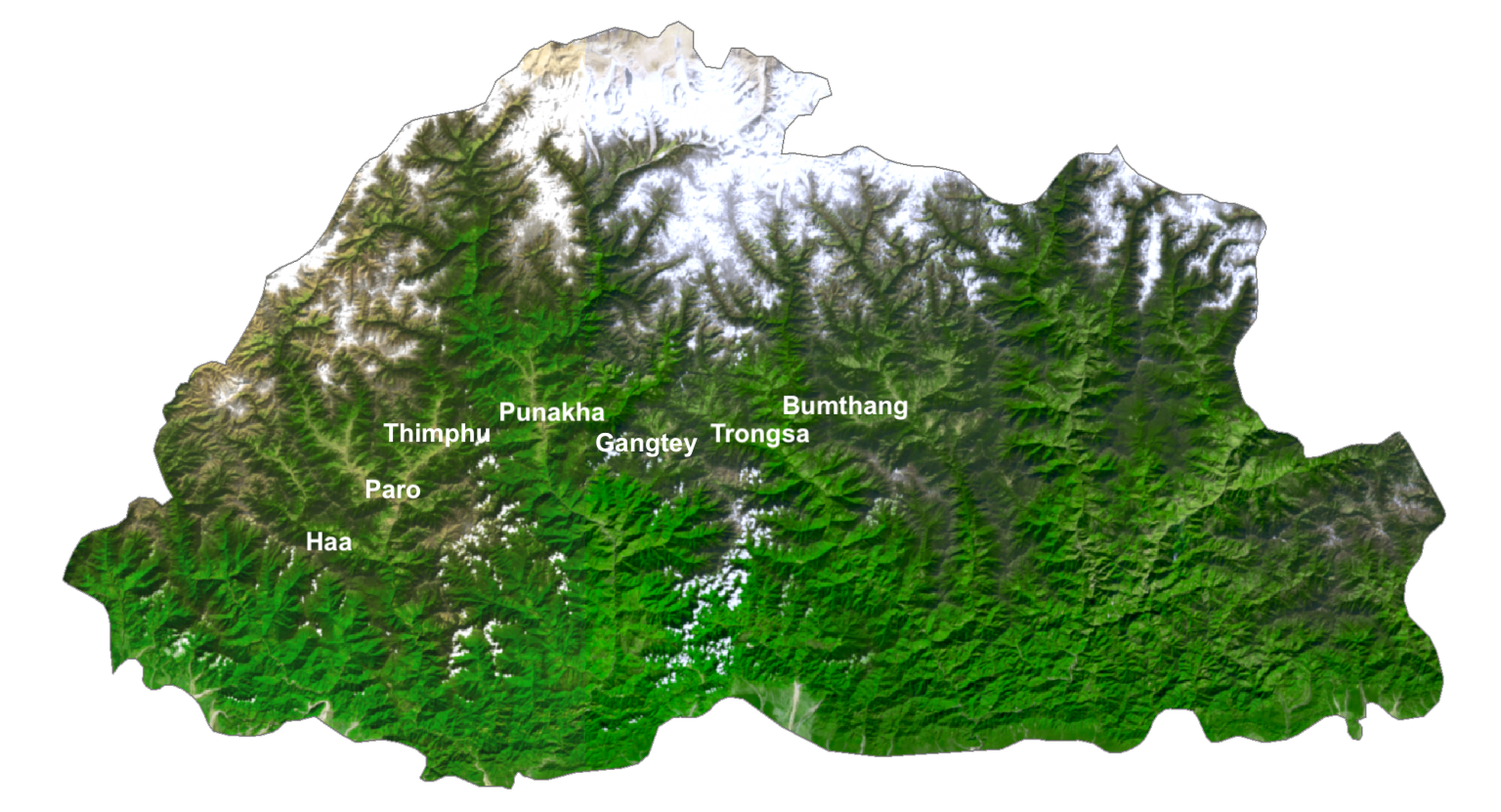
From Paro the discovery and adventure firstly heads west to the Haa Valley before heading east to Punakha, Gangtey, Trongsa and Bumthang.
Paro International Airport is where the journey to explore the wonders of Bhutan begins. It’s got to be one of the most scenic airports in the world. One of the smallest too. Most people fly to Paro from Kathmandu, Delhi, Kolkatta, Bangkok, Singapore or Dhaka.
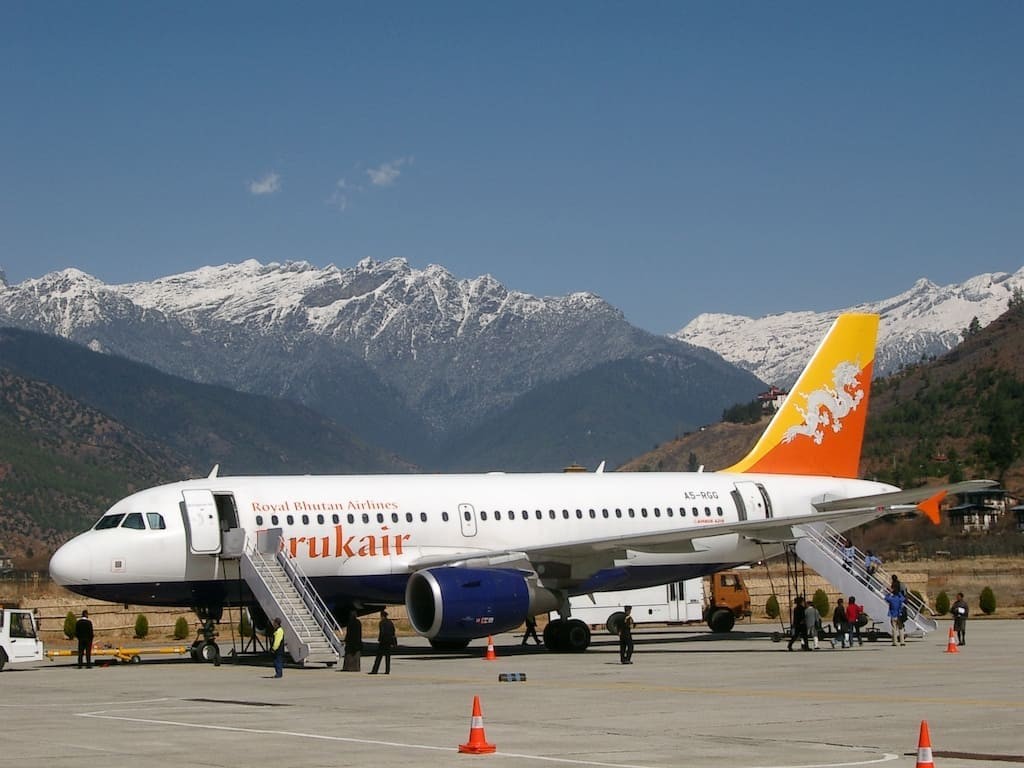
Exploring the Paro Valley
Paro is a town ship and is home to Bhutan’s tallest building, the rotund Ta Dzong, which is 22 metres (72 feet) high, and has 6 floors. It was completed in 1649.[4]It’s now also the home of the National Museum of Bhutan.The Paro Valley area itself, as well as being scenically beautiful, features many historical buildings and sacred sites.
But, by far the “big attraction” is the Taktsang Monastery, also known as The Tiger’s Nest.
According to a legend, Padmasambhava (Guru Rinpoche, an eighth-century Indian Buddhist master) flew to this location from Tibet on the back of a tigress from Khenpajong. This place was consecrated to tame the Tiger demon.
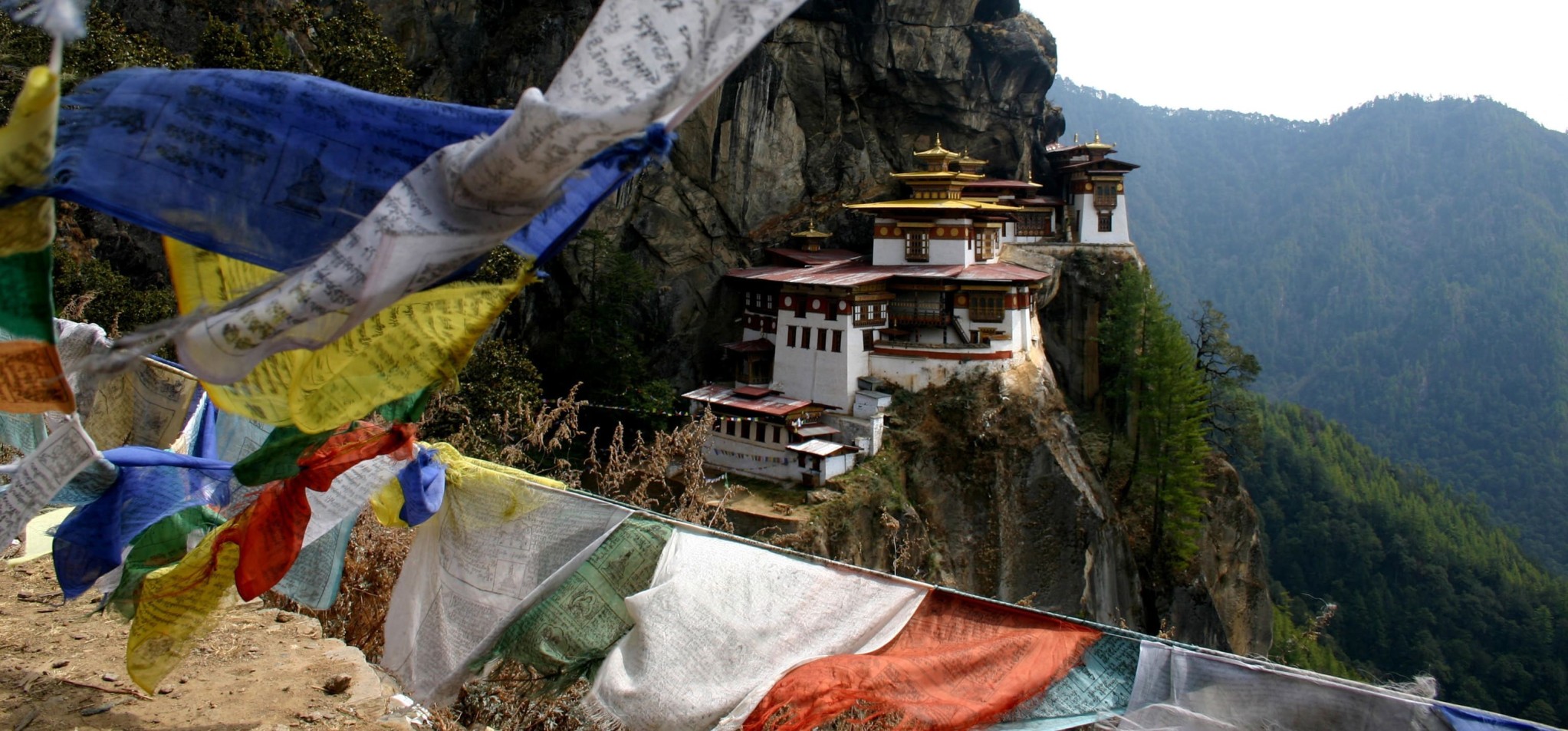
It’s the most famous sight in Bhutan. The “must see” that is top of every visitor to Bhutan’s list. It’s not difficult to see why. It is spectacularly located on a precarious cliff edge at just over 3000m. Close to Paro, the monastery is also known as the “Tiger’s Nest”.
It’s actually a stiff 2-hour walk up through woodland and a rather steep climb of around 350 m. Thankfully, there’s a teahouse at one of the classic Taktsang Monastery view points where you can rest and refresh before a further 30 minutes of climbing brings you to Takstang (3110m) itself. On the final climb, you pass what is probably the most famous view point, which looks directly across to the monastery. It’s usually possible to enter the monastery, but if there’s something going on at the monastery (religious or VIP visit), then it may not be possible. Heading steeply down, a descent of around 100m leads into a gorge before climbing back up to the main monastery gate, from which it’s down to the valley floor.
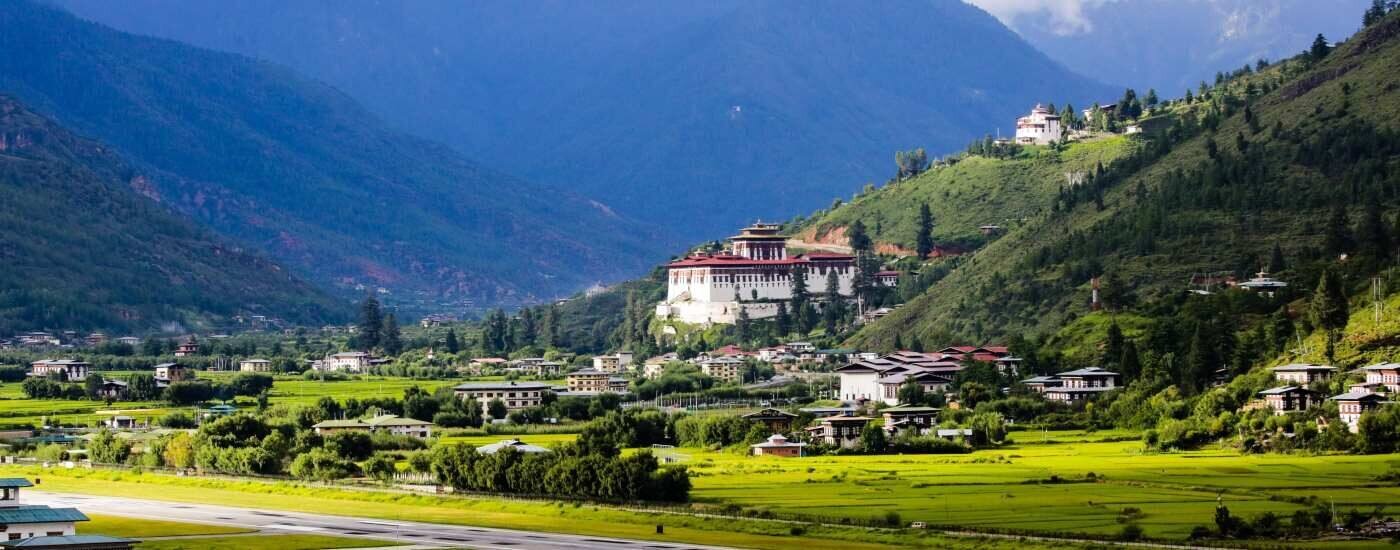
Incidentally, Gangkhar Puensum at 7570m is the highest mountain in Bhutan. It’s also the world’s highest unclimbed peak too. Bhutan banned mountaineering in 2003 so this record looks set to remain. The mountain’s name means, “White Peak of the Three Spiritual Brothers”. To see Gangkhar Puensum close up requires a long, hard trek and that also means fully supported camping, just like an expedition. But, later in this journey there’s a spectacular panoramic view of the Bhutan Himalayas and distant Gangkhar Puensum.
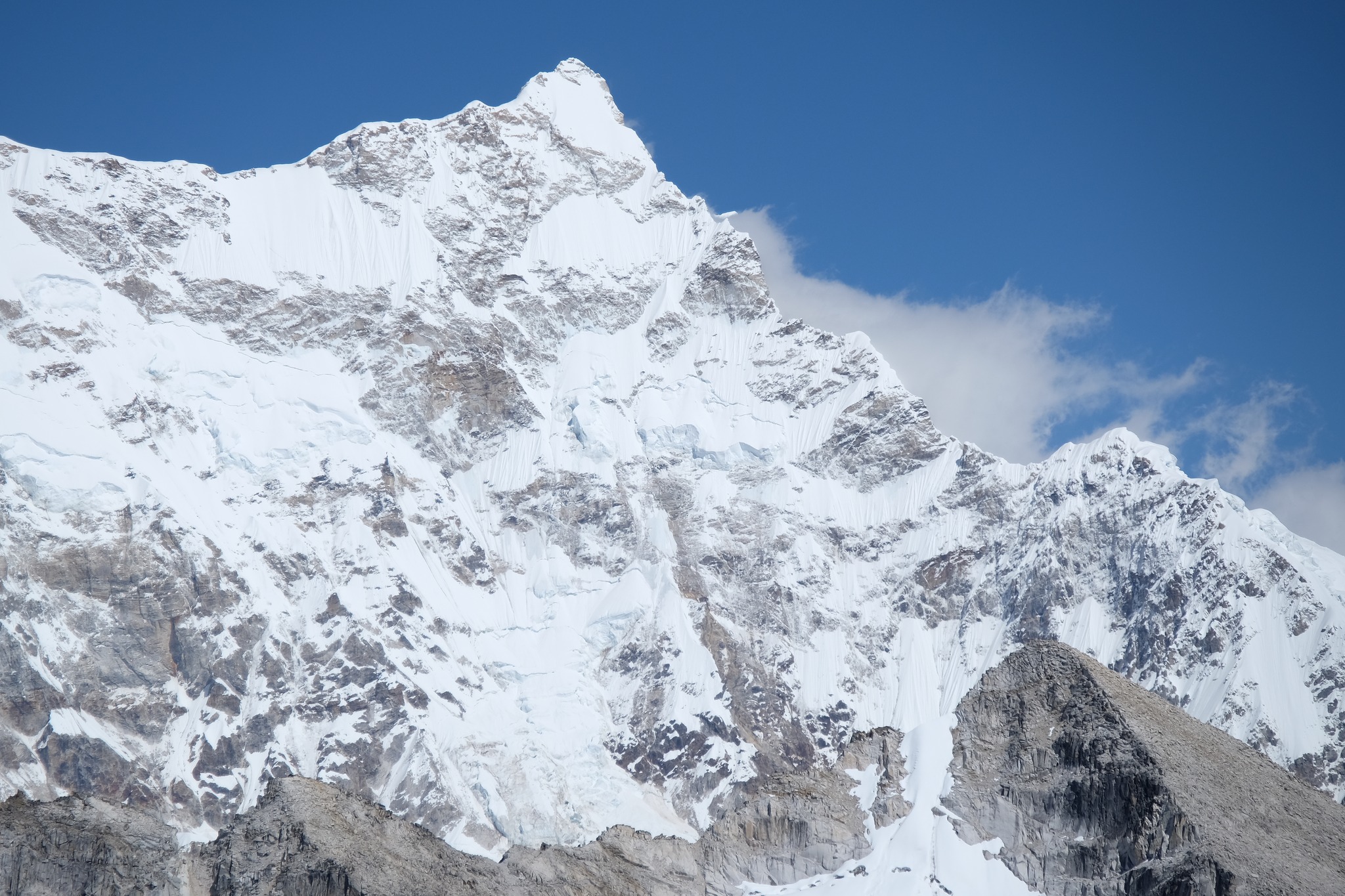
Bhutan is also famous for its many colourful, vibrant festivals.These are known in Bhutan as Tshechu’s. Some like Thimphu and Paro Festivals attract thousands. Tourists and locals alike. But, there are festivals far and wide throughout Bhutan that aren’t as busy. There are even festivals to celebrate the start of the mushroom picking season, the arrival of the black necked crane, the snow leopard and even a naked fire dance! Most Bhutan festivals involve masked dancers, songs and a fair bit of alcohol consumption.
Find out more about the numerous Bhutan Festivals
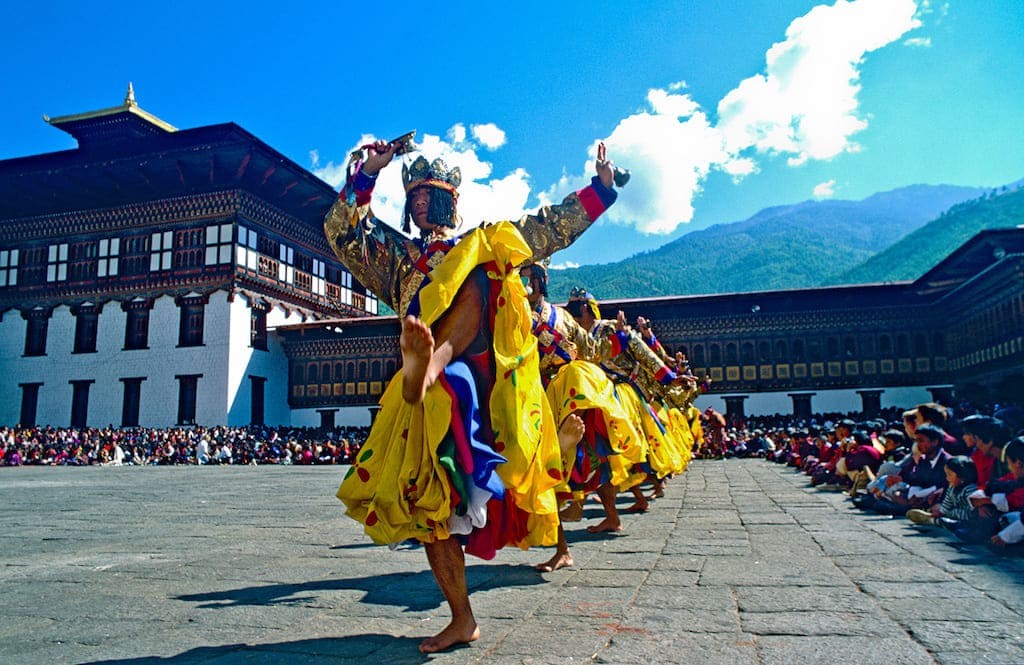
To the stunning Haa Valley
Back to the journey and before you head east on your tour of magical Bhutan, you’re heading west to the rural paradise of the Haa Valley. It’s just a two hour journey over the Chele La from Paro to discover this stunningly beautiful “off the beaten track” valley. This almost “secret” valley retains a traditional, authentic Bhutanese atmosphere and was actually off limits to tourists until the early 21st Century!
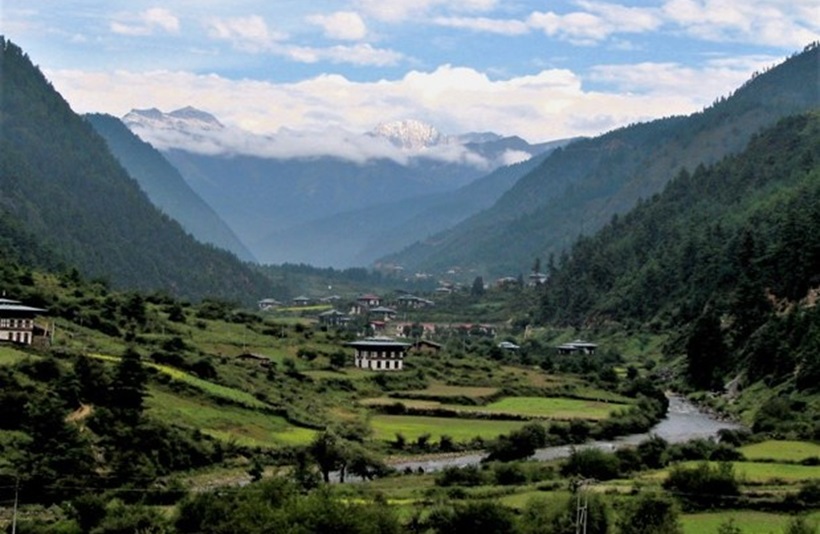
The Haa Valley is just too beautiful to leave straight away. As well as the Haa Dzong, there are the “guardian temples of Haa”, Lhakang Karpo (the white temple) and Lhakang Nagpo (the black temple) to explore. This is the Lhakang Karpo below. It lies at the foot of three forested mountains known as the Rigsum Gonpo and dates back to the 7th Century.
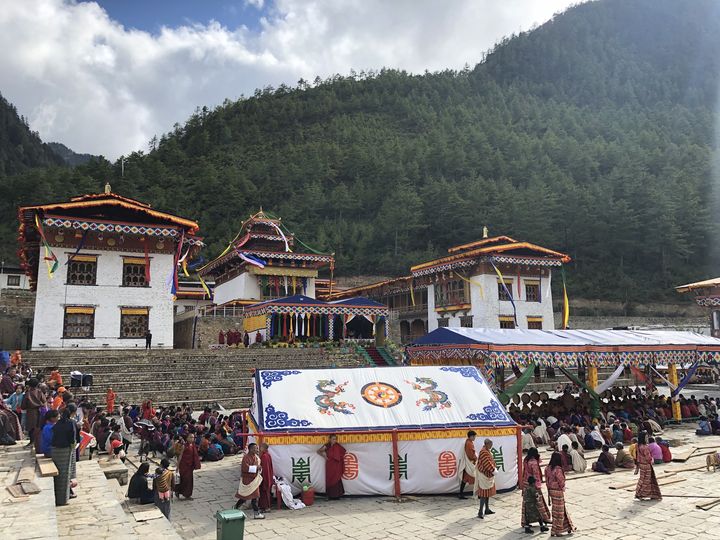
Leaving Haa you’re now heading east to Thimphu by road and back over the Chele La. At 3988m this is one of the highest road passes in all Bhutan and a spectacular view point too. A short walk through colourful prayer flags fluttering in the breeze reveals the magnificent sight of Chomolhari. This sacred peak rises to 7326m.
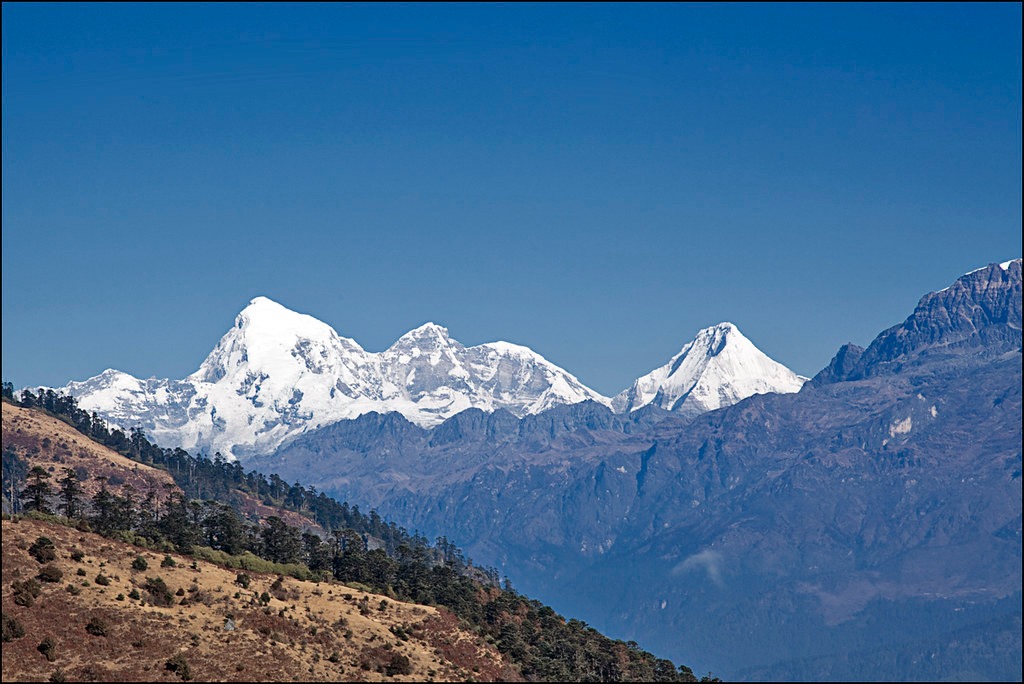
Welcome to Thimphu!
It’s the capital of Bhutan and with a population of just under 80,000 people is hardly a big city. But, Thimphu and the surrounding area has some wonderful sights to see and experience and so before heading further east in Bhutan we’ll take a look at some of the fascinating highlights of Thimphu.
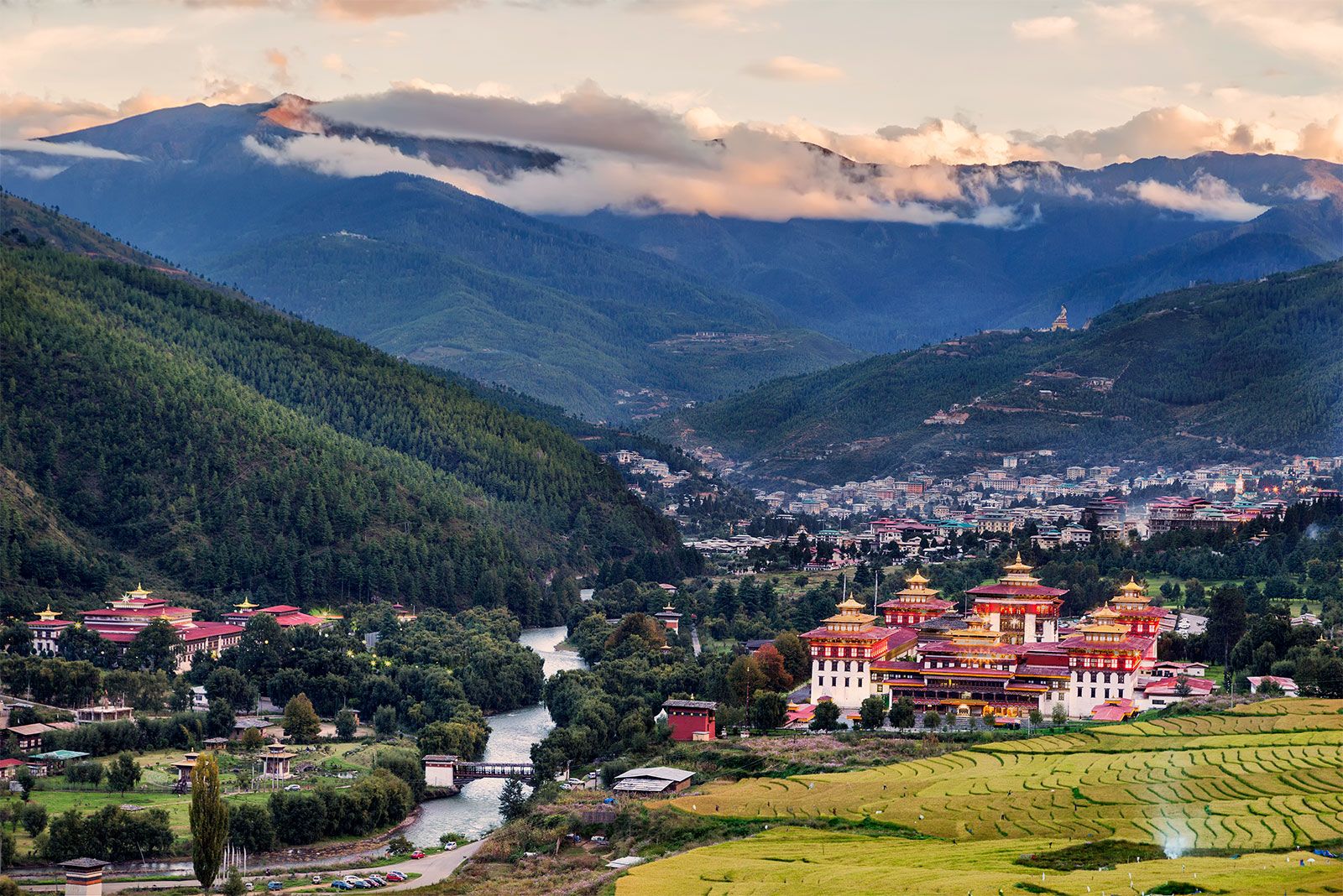
The National Memorial Chorten in Thimphu is probably the most visible landmark in Thimphu, if not the most visible religious landmark in all of Bhutan. It was constructed in 1974 as a memory of Jigme Dorji Wangchuck, 3rd Druk Gyalpo.
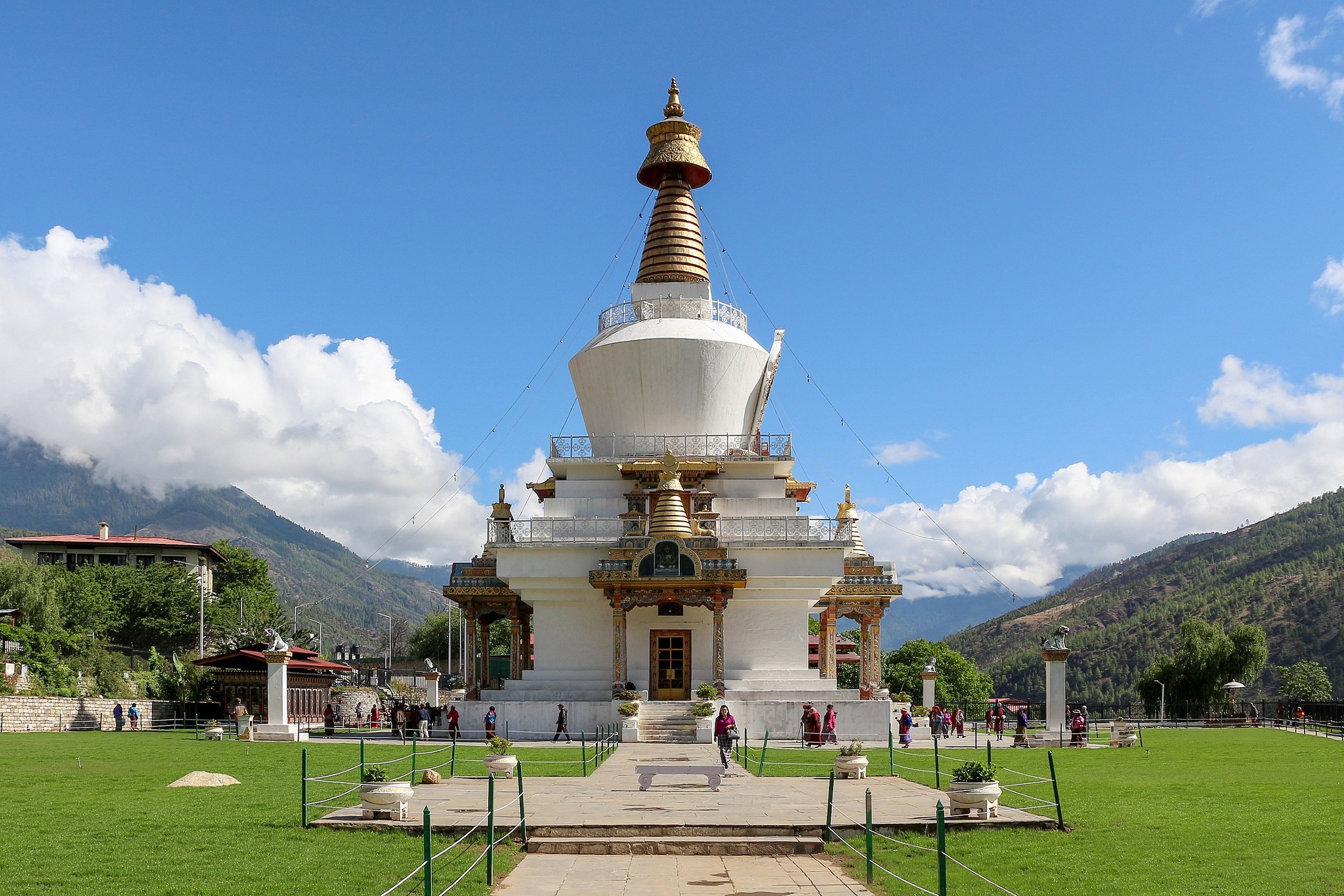
This rather unusual animal below is a Takin! It’s also the National Animal of Bhutan and a rare species of goat-antelope. The Motithang Takin Reserve at Thimphu is the place to go to see a Takin.
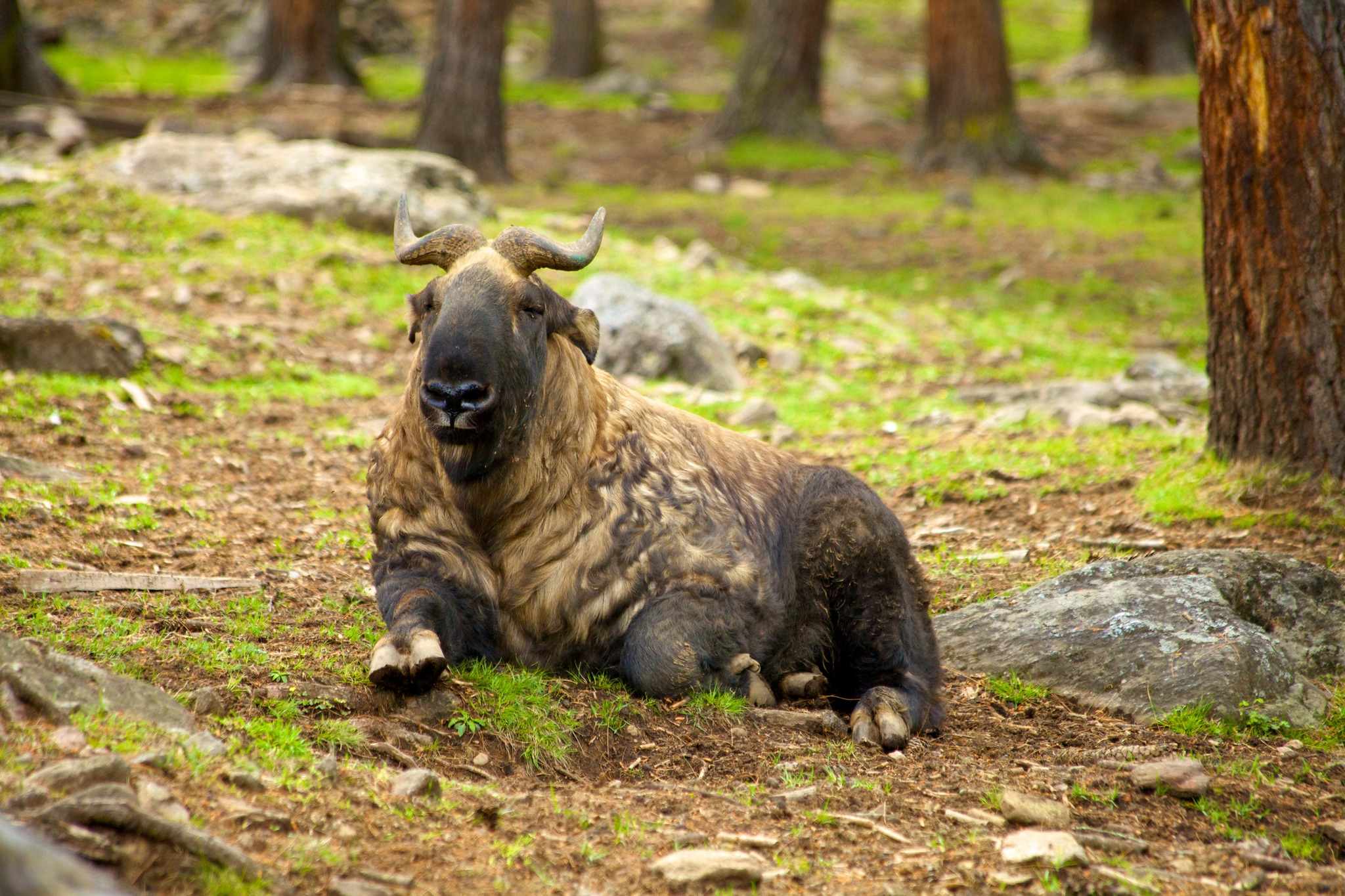
There's also the magnificent Tashichho Dzong in Thimphu. The “fortress of the glorious religion” and nowadays the seat of the Government of Bhutan. There are thirty temples, chapels and shrines within the Dzong.
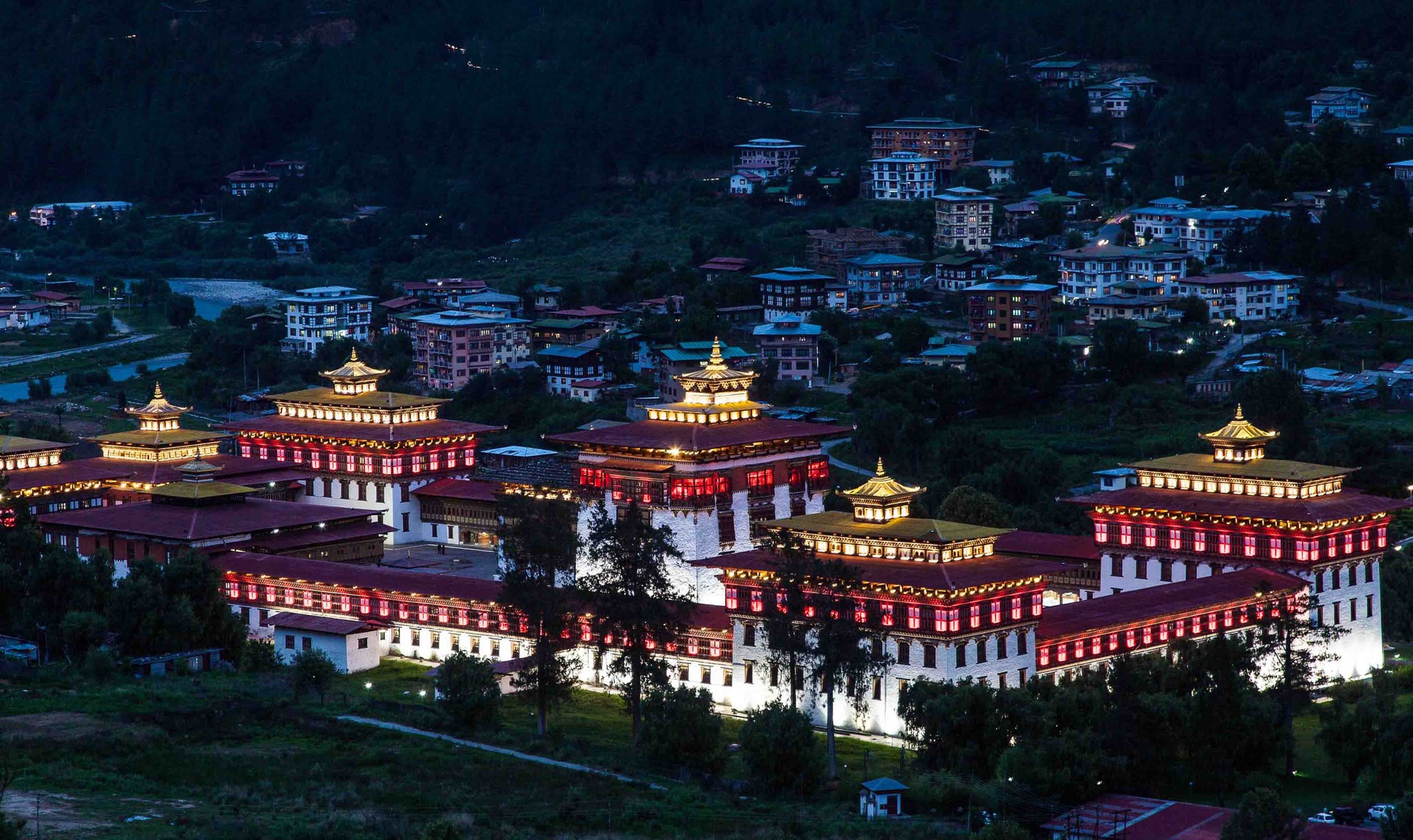
We couldn’t leave the Tashichho Dzong without mentioning the now world famous Thimphu Tshechu that takes place here. It’s probably the biggest of all Bhutan Festivals. In 2024 the Tshechu takes place between 13th-15th September.
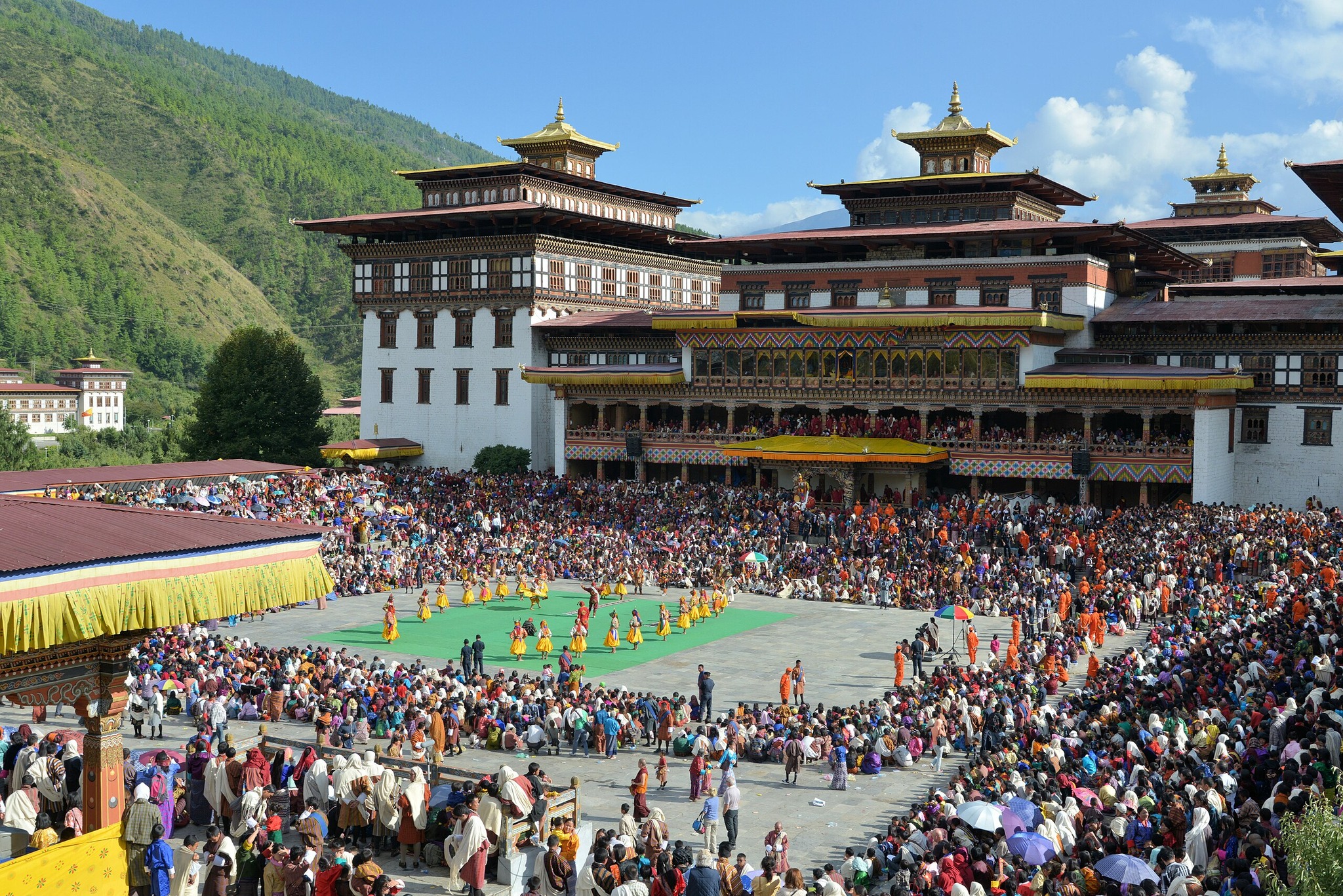
For a good leg stretcher whilst in Thimphu, the hike up to the 17th Century Cheri Gompa is a great way of experiencing rural Bhutan. It takes about an hour to walk uphill to the Gompa from the village of Begana and along the way you just might encounter some rather tame deer that live in the forests.
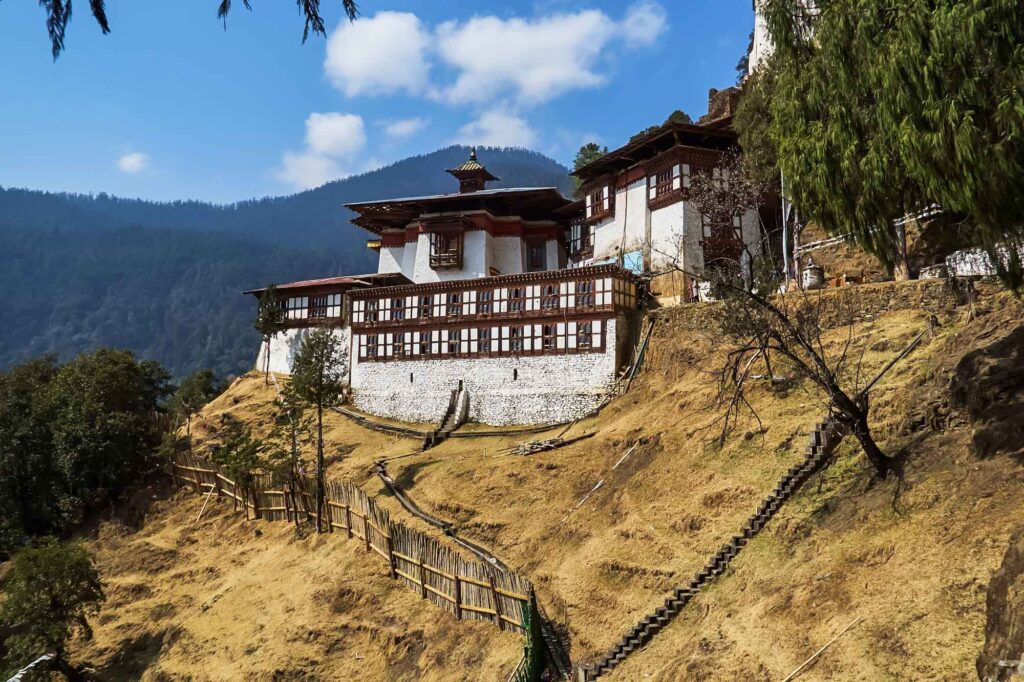
Before leaving Thimphu you’ve gotta visit the National Institute for Zorig Chusum. Here’s where you’ll find the thirteen arts and crafts of Bhutan all in one wonderful place that make up Zorig Chusum. Painting, weaving, bronze casting, woodworking and more.
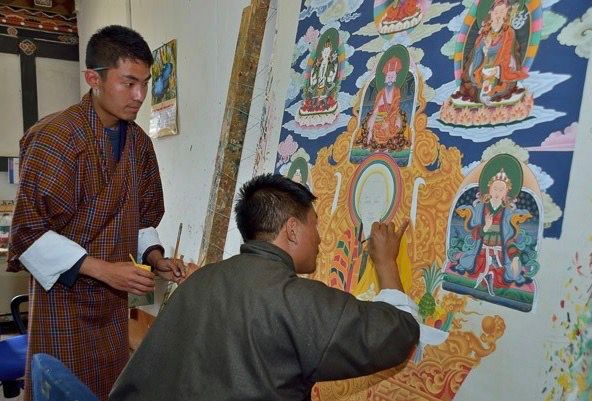
Time to leave Thimphu and continue east in Bhutan and to delightful Punakha. To get there means driving up through fragrant cypress forests and over the incredible 3100m Dochu La, which is definitely worth a stop. There are 108 chortens, the Druk Wangyal Lhakang (temple) and the Royal Botanical Park to enjoy. Oh…..and the views! On a clear day there are panoramic views of the Bhutan Himalaya including Gangkhar Puensum.
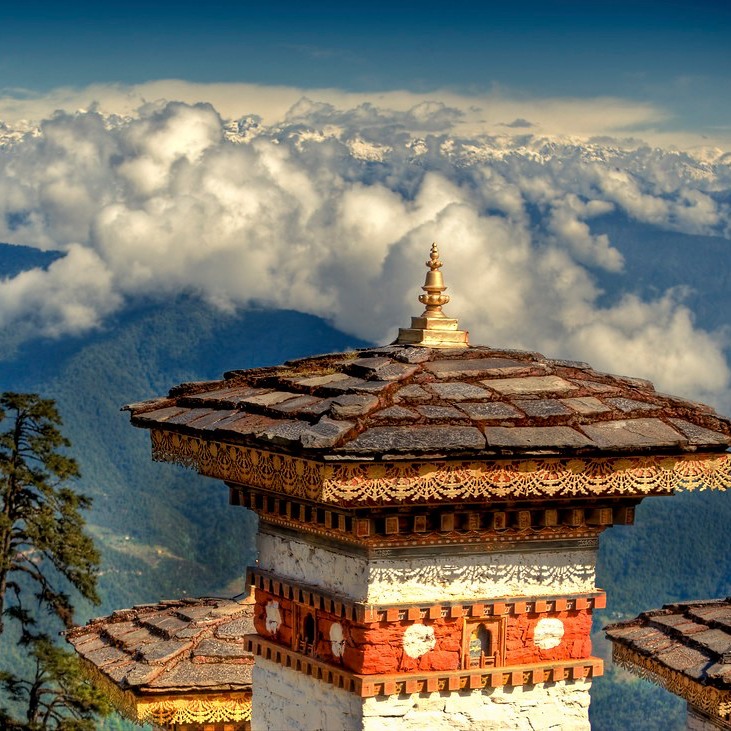
Yes, there are tigers in Bhutan and they don’t live in lowland jungles. In Bhutan tigers have been seen as high as 4000m!!! As a result of a longstanding and steadfast commitment to conservation, Bhutan has increased the number of tigers within its borders by 27% since 2015—an astounding achievement. There are now an estimated 131 tigers in Bhutan, according to the most recent survey conducted in 2021 and 2022.
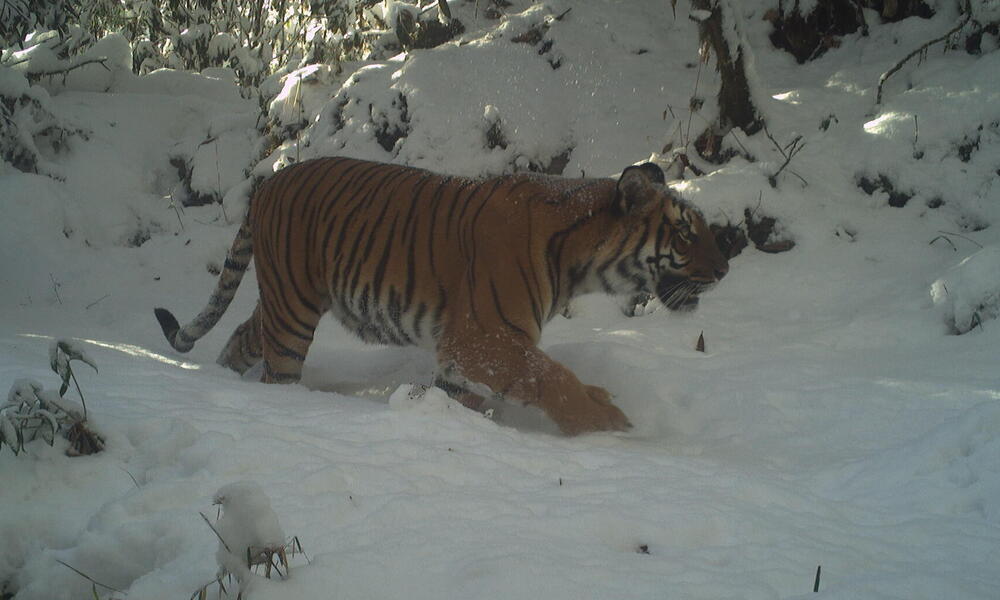
Welcome to Punakha!
The most famous site in Punakha is its magnificent Dzong, the “Palace of Great Happiness”. The Dzong at Punakha was originally built in 1637.
Punakha was also the ancient capital of Bhutan until 1955 and lies at the confluence of two of the main rivers in Bhutan, the Mo Chu and Pho Chu. Here in this beautiful valley system there is much to explore beyond “just seeing the Dzong”.
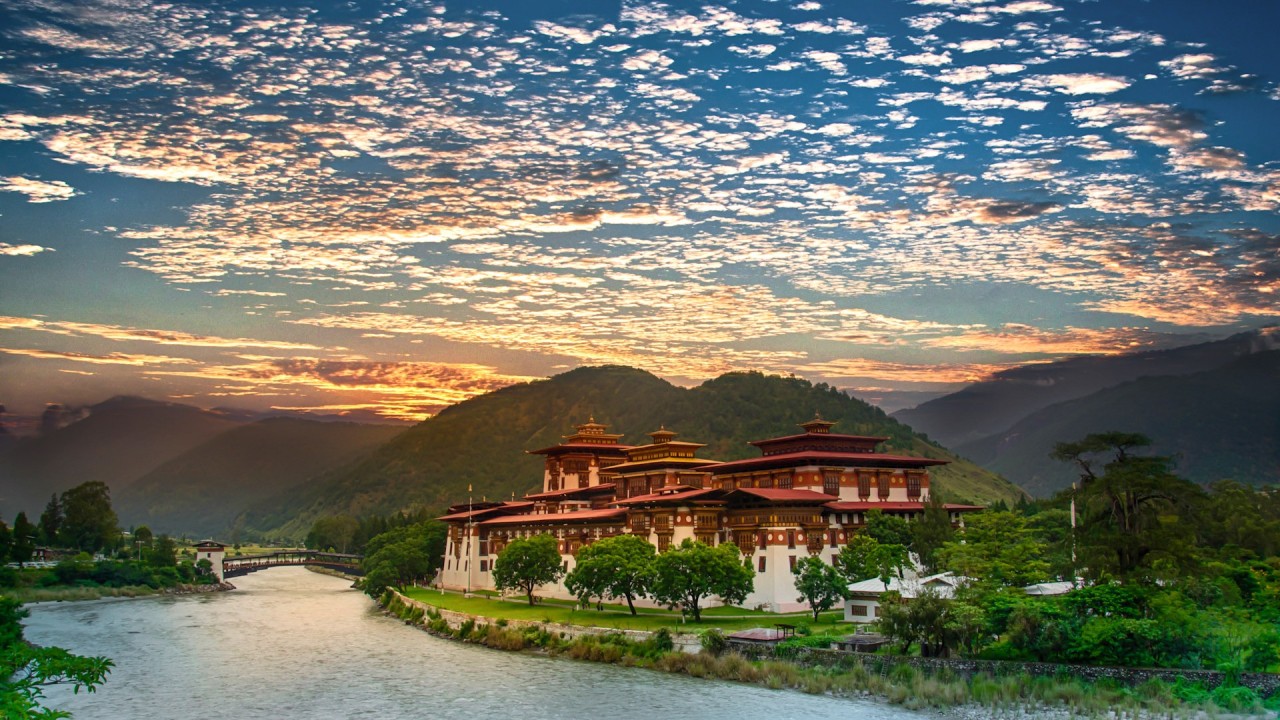
The scenic wooded slopes and the river valleys around Punakha are very rural. In fact Punakha could be considered as the “rice basket of Bhutan”. The sub-tropical climate and availability of water (especially during the monsoon) is ideal for rice growing and the hillsides are sculpted with terraced rice paddies.
Both red and white rice are grown in the Punakha Valley and the village of Ritsha is renowned for the quality of rice it produces. Ritsha (meaning at the base of a hill) features village houses made of pounded mud with stone foundations. Each house is only two stories high. Surrounding the houses are the gardens and the rice fields. The gardens also usually have fruit-bearing plants like oranges and papaya among the organic vegetables.
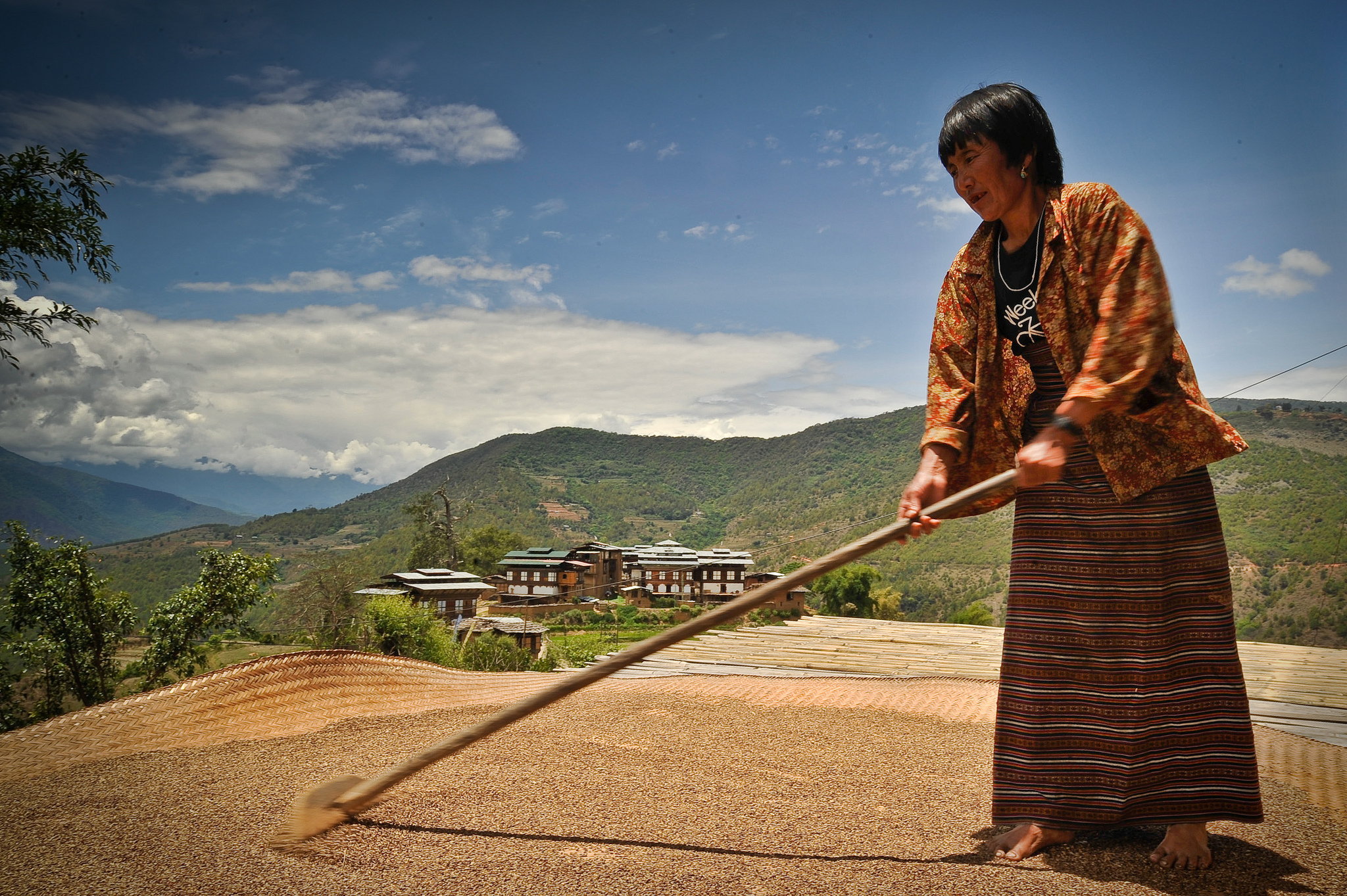
Well, OK it’s a monastery, but the Chimi Lhakhang Temple near Lobesa isn’t just your usual sort of temple. It’s the “temple of the divine madman” and is basically about fertility and the phallus as a symbol. Although the phallus symbol itself is also one of “protection”. All the same the local homes etc are decorated with the phallus symbol.
People from Bhutan travel from far and wide to visit the temple and seek the blessing of the lama in the hope that they may bear children. Some women may carry a large wooden phallus around the building perimeter (three times) in order to boost their chances of conception. Or they may basically be tapped on the head a few times by the lama and with his bone and wooden phallus tool. A ritual known as the “wang”.
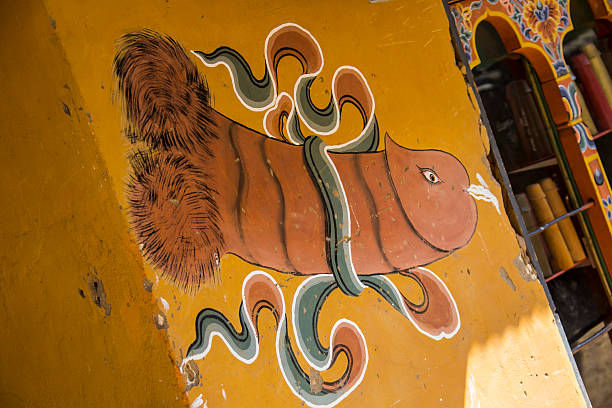
Leaving Punakha the journey continues east by road via the 3300m Pele La and down into the Gangtey Valley area.
Gangtey is the name commonly given to the Phobjikha Valley, which lies in central Bhutan and is one of the kingdom’s few glacial valleys. For several years, the cultivation of potatoes has brought a certain degree of prosperity to the local peasant farmers; however, the area is best known for the rare black-necked crane, which migrates from the Tibetan Plateau in order to avoid the extremely cold winters.
There’s even a Black-necked Crane festival celebrated at Gangtey Gompa, this annual festival honours not only the arrival of the sacred Black-necked Crane but also serves as a conservation initiative. Dancers dress as cranes, and the local kids sing songs.
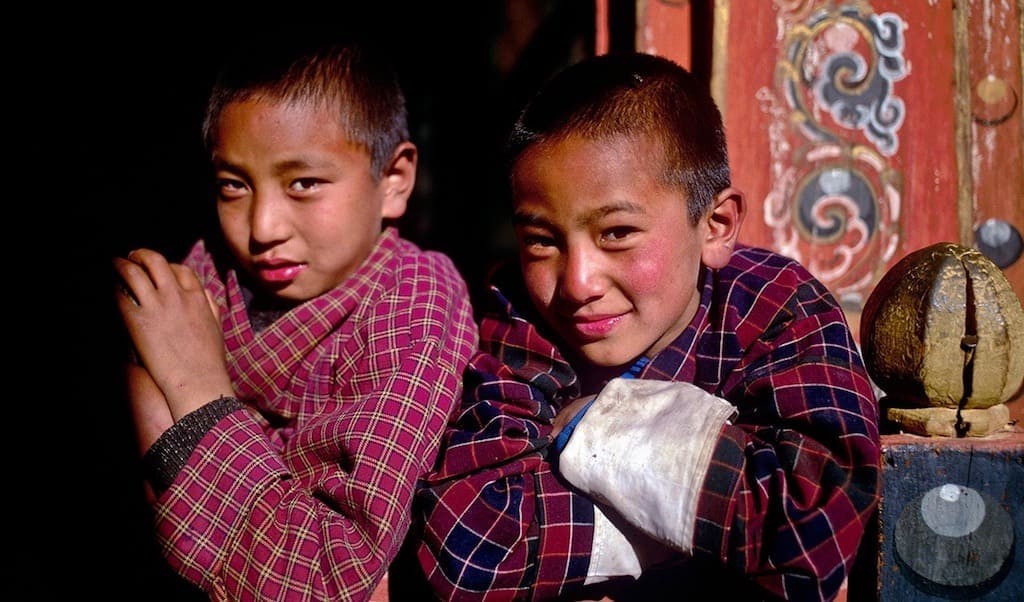
If you’re here between late October and early spring, you may just see some of the revered Black-necked Cranes and the Black-necked Crane visitor centre is the best place to go to see these wonderful birds and enjoy a nature walk.
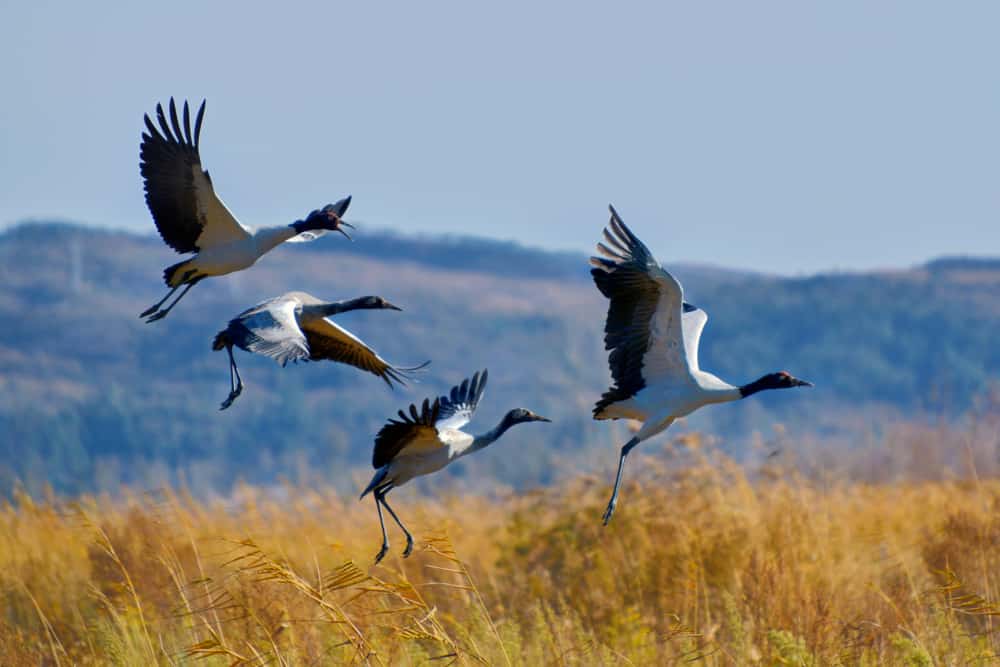
Still heading east the next stop is at Trongsa.
Here, you won’t be able to miss the Trongsa Dzong. It’s one of the most important, largest and impressive of all the Dzongs in Bhutan.
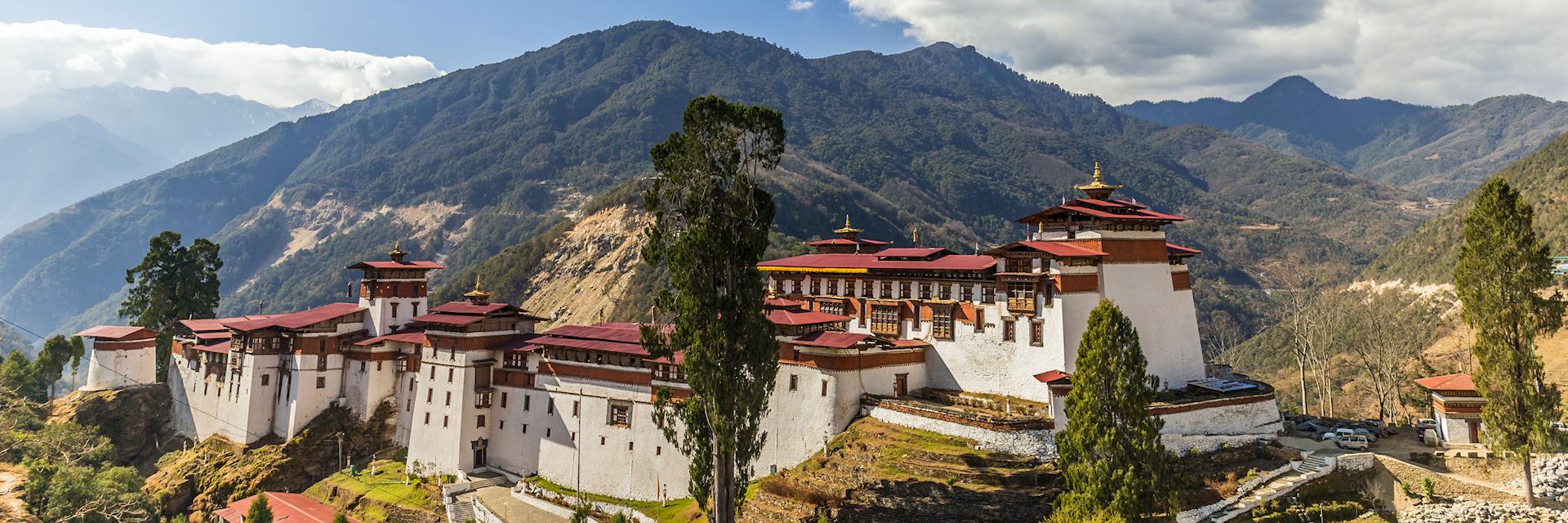
Built high above the roaring Mangde Chhu River, Trongsa Dzong is perhaps the most spectacularly sited Dzong in Bhutan, with a sheer drop to the south that often just disappears into cloud and mist. The rambling assemblage of buildings that comprises the Dzong trails down the ridge and is connected by a succession of alley-like corridors, wide stone stairs and beautiful paved courtyards. The southernmost part of the Dzong, Chorten Lhakhang, is the location of the first hermitage, built in 1543.
There’s also the watch tower known as Ta Dzong to visit, which commands a fine vantage point high up on a hillside.
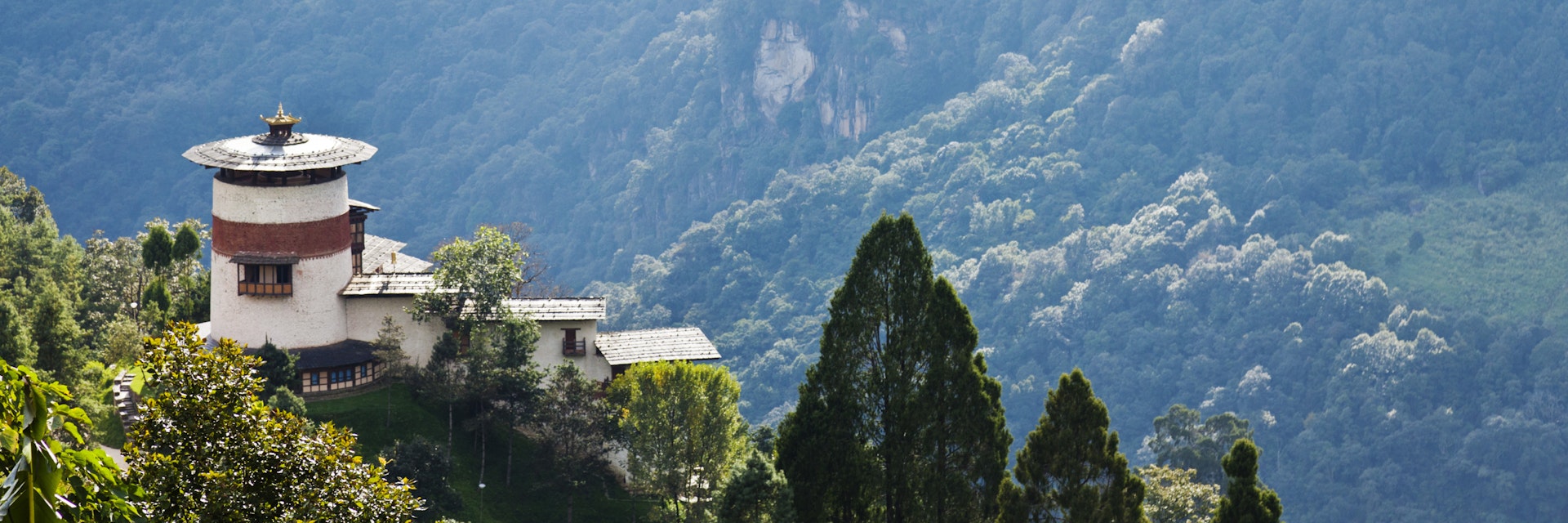
East again and into a very special valley system of Bhutan collectively known as Bumthang.
It’s around a 3–4 hour drive over the Yotong La (3425m) to reach the gorgeous Bumthang Valley from Trongsa. Just before Chhumey though, a stop off to visit the Domgkhar Palace and Lamey Gompa is worthwhile. It’s then just a short drive to the small town of Jakhar. Bumthang is the general name given to a complex of four valleys—Chhumey, Choekhor, Tang, and Ura—with altitudes varying from 2,600 to 4,000 metres. The beauty of the area is blessed with rich and fertile highlands covered mostly in pine, which are known for their buckwheat and apple production, sturdy stone houses, and plethora of monasteries. Being one of the coldest parts of the country, snow is a frequent sight in the winter.
Until the 1970’s Bumthang was only accessible my mule or on foot and still retains a very medieval atmosphere, particularly at the village of Ura.
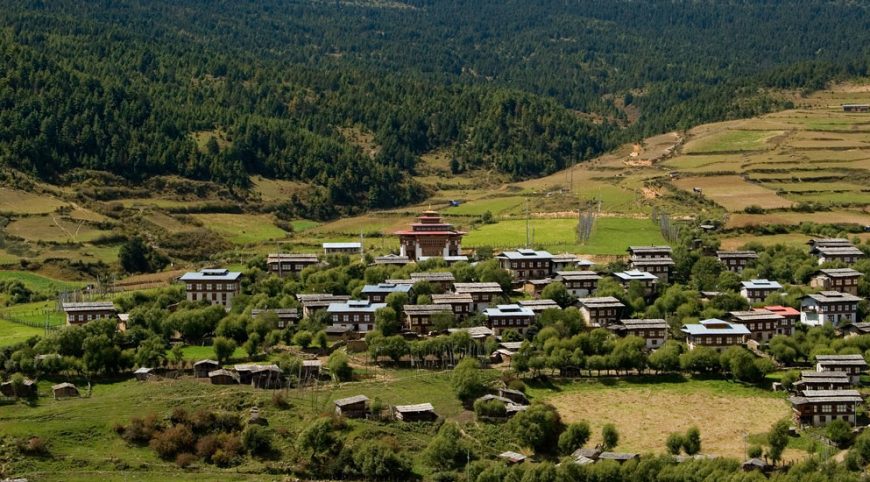
Besides natural beauty the four valleys are blessed with some of the oldest Buddhist temples in the kingdom. It was here that Buddhism was first introduced to Bhutan and where the legendary saint Pema Lingpa was born, to whom the Bhutanese royalty trace their descent.
The Mebar Tsho gorge, known as ‘the burning lake’ is where Pema Lingpa is said to have found the treasures hidden by Guru Rinpoche.
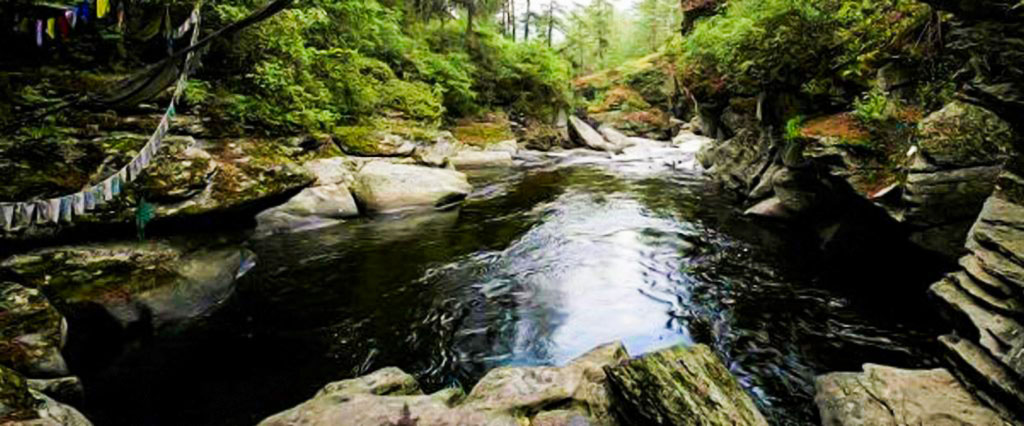
Further east in the Ura Valley you will find quaint farming villages with closely clustered houses, sheep pastures and potato fields.
Perhaps the best way to explore Bumthang is a mix of on foot and by private vehicle. One option for a straight-forward walking exploration is to walk to Jambay Lakhang and follow a track that brings you to the three large temples of Kurjey Lakhang. From here, you descend to the river, cross via a suspension bridge, and continue to walk gently down stream to the most important Nyingma Gompa in Bhutan, the 16th-century Tamshing Lakhang. The walking takes around 3–4 hours. If you’re interested in crafts, then you could visit the Yathra weaving centre as well as several of the Dzongs, monasteries, and the Wangdichoeling Palace in the valley.
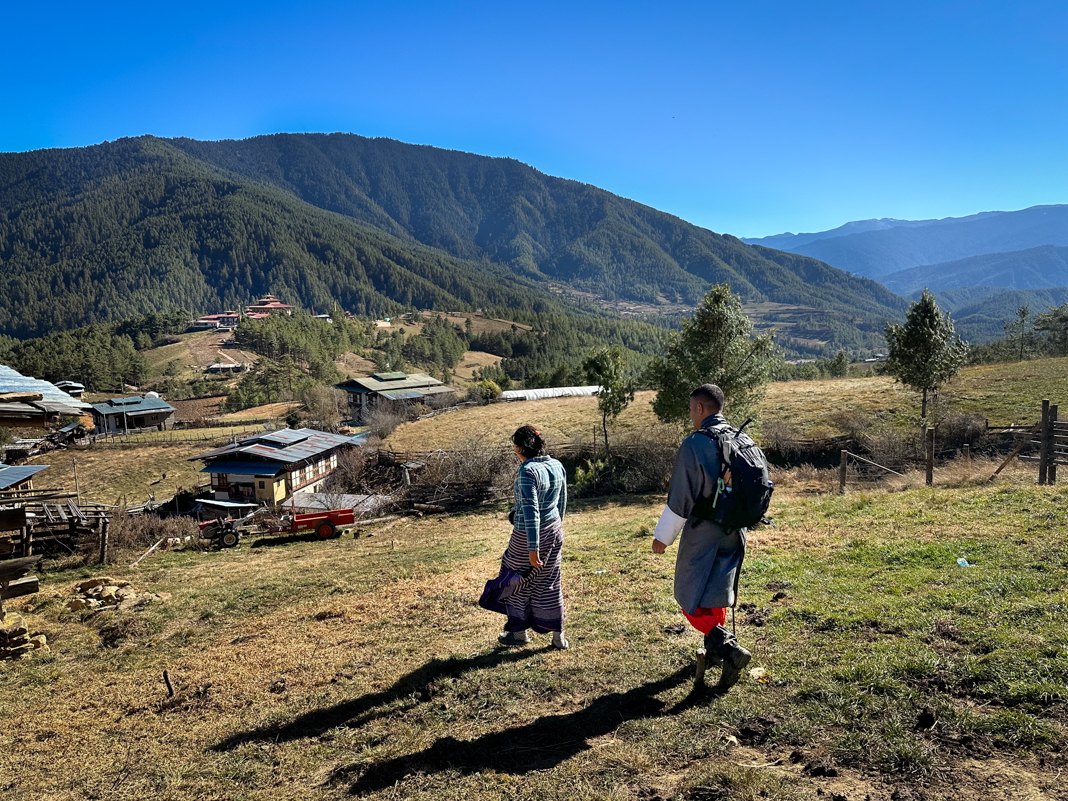
As they say, “all good things must come to an end” and so it is now time to head back west and to Paro.
Luckily there is a small airport at Jakhar, so instead of driving back it’s just a short flight to journeys end at Paro.
If you feel like you’d like to experience this journey for real, then it is actually based on our ULTIMATE BHUTAN TOUR
If you’d like to see even more of Bhutan then our specially curated WONDERS OF BHUTAN image gallery is the place to go.
As for the Bhutan Himalaya, well that’s going to require some serious trekking. Unlike Nepal where you can trek from lodge to lodge, trekking in Bhutan is akin to a fully supported expedition, not least as the number of people who trek in Bhutan is just a tiny fraction compared to Nepal.
See our BHUTAN TREKS for more.
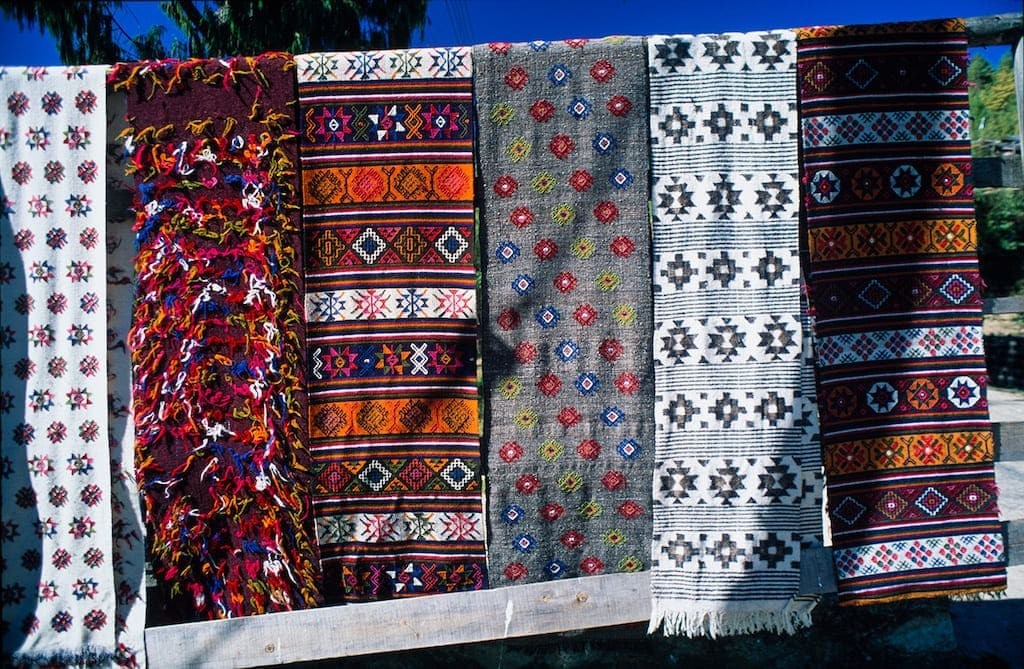
This article was originally published on the Snow Cat Travel WordPress site
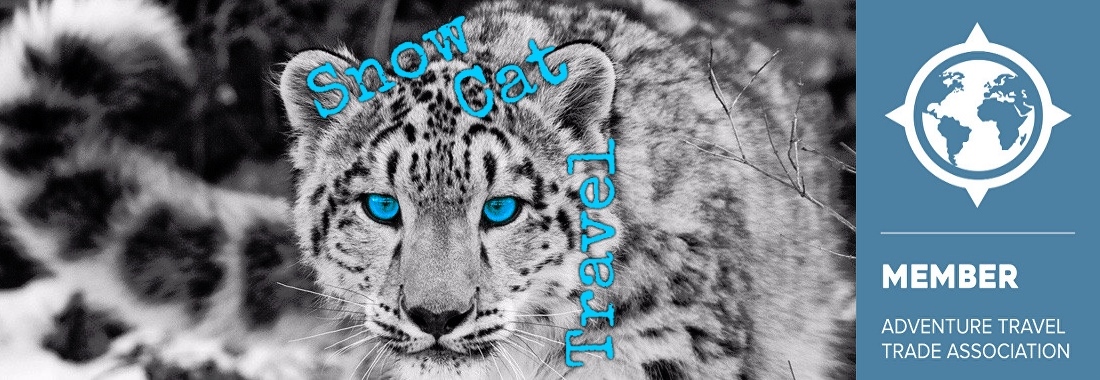

All rights reserved. Snow Cat Travel is a Registered Trade Mark UK 00003289264

